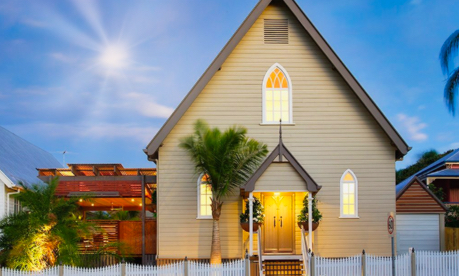With churches in every neighborhood, Catholicism has long been a historic aspect of Chicago culture.
Last year, the Archdiocese of Chicago had more than 2.1 million Catholics, according to statistics from the archdiocese.
However, changing neighborhood demographics, fewer parishioners and priests, and a lack of funding have led dioceses across the nation to announce plans for closure or consolidation with nearby congregations.
In 1975, there were 477 parishes in Chicago. As of July 1, 2019, there will be 316, according to Susan Thomas, a spokeswoman from the archdiocese.
Recently, the archdiocese announced that St. Adalbert Catholic Church in Pilsen will hold its last Mass in July.
Thomas said the process to decide parish closures will continue through at least 2023.
“It is a reality that at some point we do have to draw the ministry of these areas to a close,” the Rev. Jason Malave, coordinator for the Renew My Church program, a campaign aimed at structural change and spiritual renewal of the Catholic Church in the Chicago area.
Here’s how a church ceases to be a Catholic place of worship:
Closing a church or a parish?
According to canon law, the guiding statutes for the Catholic Church, procedure differs for closing or restructuring a parish, which is defined as a community of worshipers, and closing a church, the building itself.
The closure of a parish does not necessarily imply the closure of a church. St. Adalbert Parish, St. Ann Parish and St. Paul Parish were consolidated into one parish in 2016, but each church remained in use.
Bishops alone have the power to “erect, suppress, or alter parishes” but can only do so after speaking to the presbyteral council, made up of diocesan priests — and consulting parishioners, as stated in canon 515.
However, the bishop is not obligated to follow their advice.
When a church stops being a church
If a bishop determines that a “grave cause” exists — dire financial burden, a dwindling number of faithful or extreme physical disrepair, to name a few — the church can be relegated to “profane but not sordid use,” according to canon law.
The bishop must also prove that parishioners won’t be abandoned — that they will have access to another nearby place of worship.
The bishop will then issue a formal decree that removes the consecration of the church.
Parishioners can appeal the decision to close a church or parish based on either procedural grounds, finding issue with the particularities of the way the specific case was handled by the bishop, or on substantive grounds, ultimately disagreeing with the reasoning for the closure. Continue reading
- Image: Interiorholic
